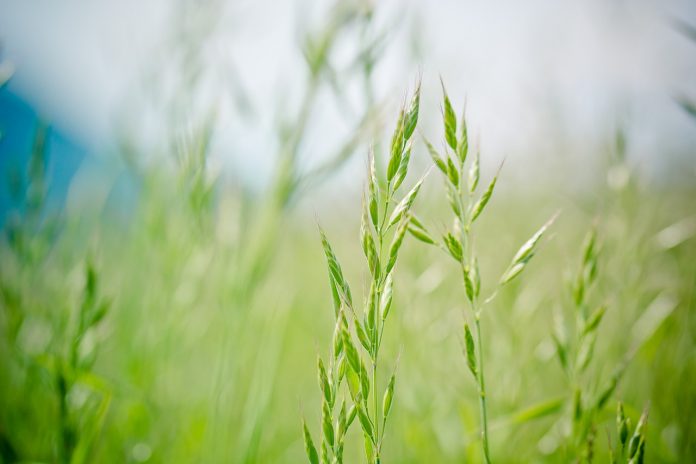At the July 15 Ohio Sheep Day program, participants in the pasture walk breakout sessions had numerous questions about infected tall fescue pastures.
One common question was how to renovate those pastures and/or replace the infected tall fescue with a more desirable pasture species.
The term “infected tall fescue” is generally applied to Kentucky 31 variety tall fescue that has an endophyte fungus growing within the plant. This fungus provides the plant with improved drought tolerance, increased resistance to plant diseases, insect pests, and stand persistence on poor soils.
Unfortunately, while the endophyte provides these plant benefits, it produces toxic effects in livestock that consume the infected forage.
The issue
Livestock grazing infected fescue experience elevated body temperature, loss of blood flow to extremities, low conception rates, decreased forage intake and poor weight gain. Tall fescue infected with this toxic endophyte is persistent in pastures and eradicating or renovating these pastures requires planning and time.
The strategy recommended for eradication of infected tall fescue is termed spray-smother-spray and is most effective when employed over a period of about one year.
The key to this strategy is the use of chemical, mechanical and biological options to kill existing tall fescue plants and to prevent any infected plants that may survive or any new plants that arise from going to seed for at least a year.
Research indicates the toxic endophyte loses viability in seed stored for at least a year. The process can start in either the spring or late summer.
Eradication steps
For the purposes of this article, I’ll outline the eradication steps beginning from a late summer standpoint which I will define as late August to early October period.
Before beginning the process, it’s a good idea to take a soil test and make sure that soil pH and soil fertility levels are conducive to establishing a new forage crop. There will be opportunities within the eradication process to apply lime and/or fertilizer if needed.
Soil pH should be in the 6.5 to 6.8 range. Look for soil phosphorus levels of 25 ppm Bray P1 or 40 ppm M3 and a soil potassium level around 120 ppm. The first step is to spray to kill off the infected fescue as completely as possible.
Glyphosate is generally an effective chemical. Read the label for application directions, spray volume, and rate, including the need for any surfactants or the addition of ammonium sulfate to the tank mix.
Fescue should be actively growing so it may be necessary to mow or clip the pasture to ensure it is in vegetative growth. The temperature and moisture conditions also need to be such that the fescue is growing.
Apply lime and/or phosphorus/potassium fertilizer as indicated by a soil test result after the spray application as the fescue begins to die. The next step is to plant an annual forage smother crop.
This will be a winter cereal crop such as barley, winter wheat or cereal rye. If the erosion potential is low, some tillage can be used to establish the crop and ensure good seed to soil contact.
If tillage is not appropriate, use a calibrated and correctly set up no-till drill to plant.
Plant early
The key to making this step work is to get the cereal crop planted early enough so that it produces a thick stand to smother out any un-killed fescue that tries to re-grow. This winter cereal crop can be used for some late fall grazing as well.
Do not feed any infected tall fescue hay on this pasture field, and if livestock are going to graze the winter cereal crop and they are coming off a pasture with infected fescue, allow a minimum three-day clean out period before turning them into this field.
In the spring, the cereal crop will begin growth. Take a grazing pass or harvest the field as stored forage, ideally before seed head formation. Terminate the regrowth following the harvest or grazing pass with another spray application.
Smother crop
The next step is to establish a warm-season summer annual crop that again will act as a smother crop to any tall fescue trying to grow.
Crops that work include pearl millet, sudangrass, or sorghum-sudan hybrids. This also provides another opportunity to apply lime and/or fertilizer if the soil test calls for it. Plant these summer annuals when soil temperature is at least 60 degrees F. and use full seeding rates.
Manage summer annuals for grazing or for harvest as stored forages. Summer annuals generally become unproductive by mid-September because of cooler temperatures.
For our purpose, take a last grazing pass or harvest by mid-August, and then spray to chemically kill off any of the summer annual forage and any remaining tall fescue.
The final step in the eradication process is to no-till plant a new perennial cool season grass into this field. Make sure seed is placed no more than one-quarter of an inch deep.
For many livestock producers, a good replacement grass for KY-31 infected tall fescue is … an improved tall fescue infected with a novel endophyte. The novel endophyte, sometimes called a “friendly” endophyte, confers many of the persistence and survival benefits to the plant as well as maintains the desirable stockpiling characteristics of tall fescue.
The key difference is that the novel endophyte produces little or no toxins that affect livestock production. Livestock gains and reproductive performance are not hindered.
There are now several novel endophyte tall fescue varieties available. Consult with your seed dealer to choose an appropriate variety for Ohio conditions.













